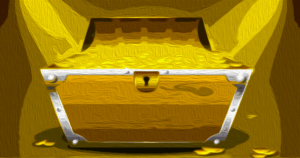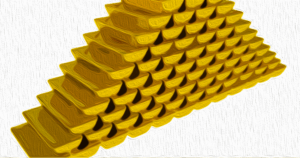
Introduction
In the first two days since the launch of the United States' inaugural spot bitcoin exchange-traded funds (ETFs), data has emerged regarding the bitcoin holdings of these funds. Among them, Blackrock currently leads the pack with a substantial holding of 11,439 bitcoin. Other notable funds with significant bitcoin reserves include the Fidelity Wise Origin Bitcoin Fund (FBTC) and the Bitwise Bitcoin Trust (BITB).
Analyzing the Holdings of Spot Bitcoin ETFs
The U.S. Securities and Exchange Commission (SEC) recently approved 11 spot bitcoin ETFs. However, it's worth noting that the fund operated by digital currency manager Hashdex is not currently a spot BTC ETF, but rather a futures product with plans to transition into a spot BTC ETF in the future.
Blackrock, as of Jan. 13, 2024, holds 11,439 BTC, making it the largest holder among the SEC-approved funds, second only to Grayscale's GBTC, which currently possesses 617,079 BTC. Blackrock's BTC holdings represent approximately 1.85% of Grayscale's extensive holdings.
The Bitwise ETF, with a net asset under management (AUM) of $242,940,653, likely holds around 5,550 BTC according to insights from bitcointreasuries.net user @girevik. However, the exact quantity of BTC is not officially disclosed on the Bitwise website, which only displays the AUM in U.S. dollars.
Following Bitwise is the Fidelity Wise Origin Bitcoin Fund (FBTC) with 5,290 BTC. Vaneck's spot bitcoin ETF, named HODL, openly reveals its BTC holdings with 1,640.92 BTC. Franklin Templeton's ETF, labeled EZBC, holds 1,131 BTC as of Friday.
The ARK 21shares Bitcoin ETF (ARKB) possesses an estimated 1,625 BTC, corresponding to an AUM of $75,833,696. Valkyrie, now owned by Coinshares, holds 1,102.87 BTC. However, the Invesco Galaxy ETF (BTCO) and Wisdomtree's BTCW fund have yet to disclose their BTC holdings on their respective websites.
Collectively, the aforementioned funds, including Blackrock, hold approximately 26,152 BTC, equivalent to a value of $1.11 billion based on current BTC exchange rates. While significant, this amount is relatively modest compared to Grayscale's vast reserve of 617,079 BTC, accounting for just 4.23% of GBTC's total holdings. Additionally, non-U.S. exchange-traded products (ETPs) such as Bitwise's BITW fund surpass the newly introduced spot bitcoin ETFs in bitcoin holdings, with 11,003 BTC.
Bitcoin Holdings in International Spot Bitcoin ETFs
Outside of the United States, Canada's Purpose ETF holds an impressive 34,007 BTC. The ETC Physical Bitcoin fund on the Xetra trading platform secures 26,858 BTC, while Coinshare's fund, XBT.ST, traded on the Nasdaq Stockholm stock exchange, maintains 18,783 BTC. Grayscale's Digital Large Cap fund holds 6,391 BTC as of January 14, 2024.
Conclusion
As the United States welcomes the introduction of spot bitcoin ETFs, data on the bitcoin holdings of these funds has started to emerge. While Blackrock leads the pack in terms of BTC holdings, Grayscale's GBTC remains the largest holder with 617,079 BTC. It will be interesting to see how these holdings evolve and the impact they have on the broader cryptocurrency market.
What are your thoughts on the bitcoin holdings of these newly introduced spot bitcoin ETFs? Share your opinions in the comments section below.
Frequently Asked Questions
What does gold do as an investment?
Gold's price fluctuates depending on the supply and demand. Interest rates are also a factor.
Due to the limited supply of gold, prices for gold are highly volatile. There is also a risk in owning gold, as you must store it somewhere.
What amount should I invest in my Roth IRA?
Roth IRAs let you save tax on retirement by allowing you to deposit your own money. The account cannot be withdrawn from until you are 59 1/2. There are some rules that you need to keep in mind if you want to withdraw funds from these accounts before you reach 59 1/2. You cannot touch your principal (the amount you originally deposited). No matter how much money you contribute, you cannot take out more than was originally deposited to the account. You must pay taxes on the difference if you want to take out more than what you initially contributed.
The second rule is that your earnings cannot be withheld without income tax. So, when you withdraw, you'll pay taxes on those earnings. Let's assume that you contribute $5,000 each year to your Roth IRA. In addition, let's assume you earn $10,000 per year after contributing. The federal income tax on your earnings would amount to $3,500. This leaves you with $6,500 remaining. Because you can only withdraw what you have initially contributed, this is all you can take out.
If you took $4,000 from your earnings, you would still owe taxes for the $1,500 remaining. On top of that, you'd lose half of the earnings you had taken out because they would be taxed again at 50% (half of 40%). So even though you received $7,000 in Roth IRA contributions, you only received $4,000.
There are two types if Roth IRAs: Roth and Traditional. Traditional IRAs allow pre-tax contributions to be deducted from your taxable tax income. You can withdraw your contributions plus interest from your traditional IRA when you retire. There are no restrictions on the amount you can withdraw from a Traditional IRA.
Roth IRAs don't allow you deduct contributions. However, once you retire, you can withdraw your entire contribution plus accrued interest. There is no minimum withdrawal requirement, unlike traditional IRAs. You don't need to wait until your 70 1/2 year old age before you can withdraw your contribution.
How to open a Precious Metal IRA
The first step is to decide if you want an Individual Retirement Account (IRA). You must complete Form 8606 to open an account. Then you must fill out Form 5204 to determine what type of IRA you are eligible for. This form should not be completed more than 60 days after the account is opened. You can then start investing once you have this completed. You can also contribute directly to your paycheck via payroll deduction.
For a Roth IRA you will need to complete Form 8903. Otherwise, the process will look identical to an existing IRA.
To be eligible for a precious metals IRA, you will need to meet certain requirements. The IRS states that you must be at least 18 and have earned income. You can't earn more than $110,000 per annum ($220,000 in married filing jointly) for any given tax year. Additionally, you must make regular contributions. These rules will apply regardless of whether your contributions are made through an employer or directly out of your paychecks.
You can use a precious metals IRA to invest in gold, silver, palladium, platinum, rhodium, or even platinum. However, you can't purchase physical bullion. This means you won't be allowed to trade shares of stock or bonds.
To invest directly in precious metals companies, you can also use precious metals IRA. This option is available from some IRA providers.
However, investing in precious metals via an IRA has two serious drawbacks. First, they're not as liquid as stocks or bonds. This makes it harder to sell them when needed. Second, they don’t produce dividends like stocks or bonds. So, you'll lose money over time rather than gain it.
What precious metals do you have that you can invest in for your retirement?
These precious metals are among the most attractive investments. They are both simple to purchase and sell, and they have been around for a long time. They are a great way to diversify your portfolio.
Gold: This is the oldest form of currency that man has ever known. It is very stable and secure. Because of this, it's considered a good way to preserve wealth during times of uncertainty.
Silver: Investors have always loved silver. It's an ideal choice for those who prefer to avoid volatility. Silver tends to move up, not down, unlike gold.
Platinum: A new form of precious metal, platinum is growing in popularity. It is very durable and resistant against corrosion, much like silver and gold. It is, however, more expensive than its competitors.
Rhodium: The catalytic converters use Rhodium. It is also used in jewelry-making. And, it's relatively cheap compared to other types of precious metals.
Palladium (or Palladium): Palladium can be compared to platinum, but is much more common. It's also more affordable. It's a popular choice for investors who want to add precious metals into their portfolios.
What are the fees for an IRA that holds gold?
Six dollars per month is the fee for an Individual Retirement Account (IRA). This fee includes account maintenance fees as well as any investment costs related to your selected investments.
If you want to diversify, you may be required to pay extra fees. These fees can vary depending on which type of IRA account you choose. Some companies offer free check accounts, but charge monthly fee for IRA accounts.
Most providers also charge annual management costs. These fees are usually between 0% and 1%. The average rate is.25% each year. These rates are usually waived if you use a broker such as TD Ameritrade.
Is physical gold allowed in an IRA.
Not just paper money or coins, gold is money. It is an asset that people have used over thousands of years as money, and a way to protect wealth from inflation and economic uncertainties. Investors use gold today as part of their diversified portfolio, because it tends to perform better in times of financial turmoil.
Today, many Americans invest in precious metals such as gold and silver rather than stocks and bonds. Although owning gold does not guarantee that you will make money investing in it, there are many reasons to consider adding gold into your retirement portfolio.
Another reason is that gold has historically outperformed other assets in financial panic periods. Gold prices rose nearly 100 percent between August 2011 and early 2013, while the S&P 500 fell 21 percent over the same period. During turbulent market conditions gold was one of few assets that outperformed stock prices.
Gold is one of the few assets that has virtually no counterparty risks. If your stock portfolio goes down, you still own your shares. However, if you have gold, your value will rise even if the company that you invested in defaults on its loans.
Finally, gold provides liquidity. This means that, unlike most other investments, you can sell your gold anytime without worrying about finding another buyer. Gold is liquid and therefore it makes sense to purchase small amounts. This allows one to take advantage short-term fluctuations within the gold price.
Statistics
- You can only purchase gold bars at least 99.5% purity. (forbes.com)
- Contribution limits$6,000 (49 and under) $7,000 (50 and up)$6,000 (49 and under) $7,000 (50 and up)$58,000 or 25% of your annual compensation (whichever is smaller) (lendedu.com)
- If you take distributions before hitting 59.5, you'll owe a 10% penalty on the amount withdrawn. (lendedu.com)
- Instead, the economy improved, stocks rebounded, and gold plunged, losing 28 percent of its value in 2013. (aarp.org)
- (Basically, if your GDP grows by 2%, you need miners to dig 2% more gold out of the ground every year to keep prices steady.) (smartasset.com)













